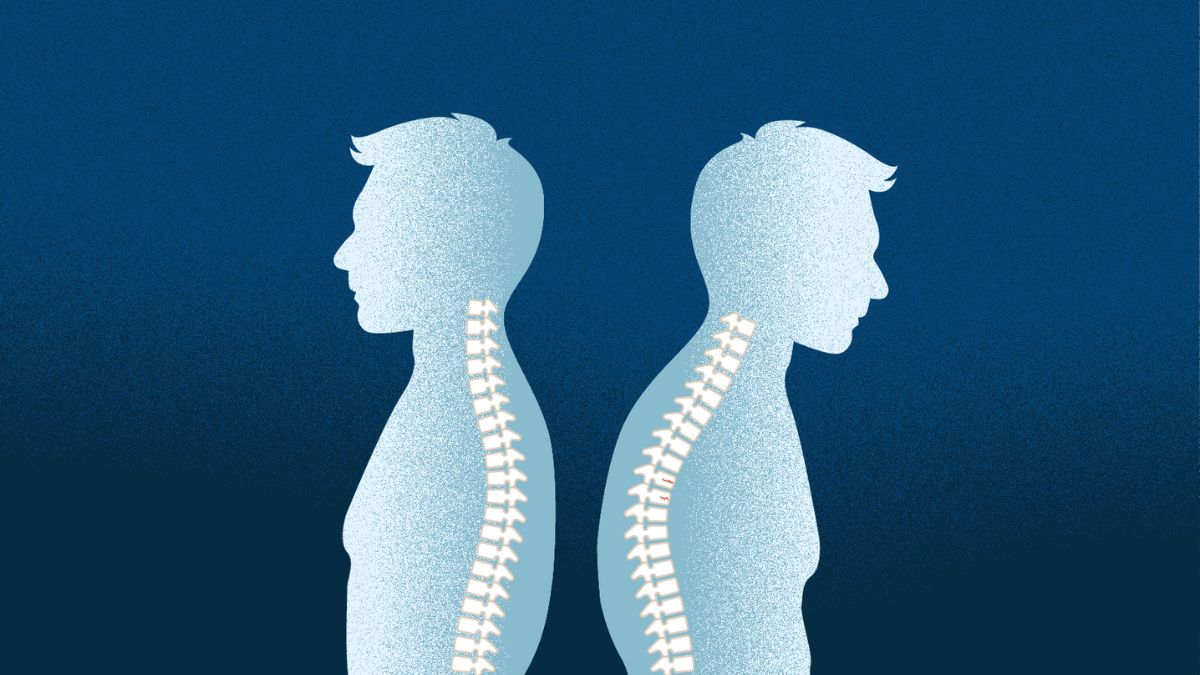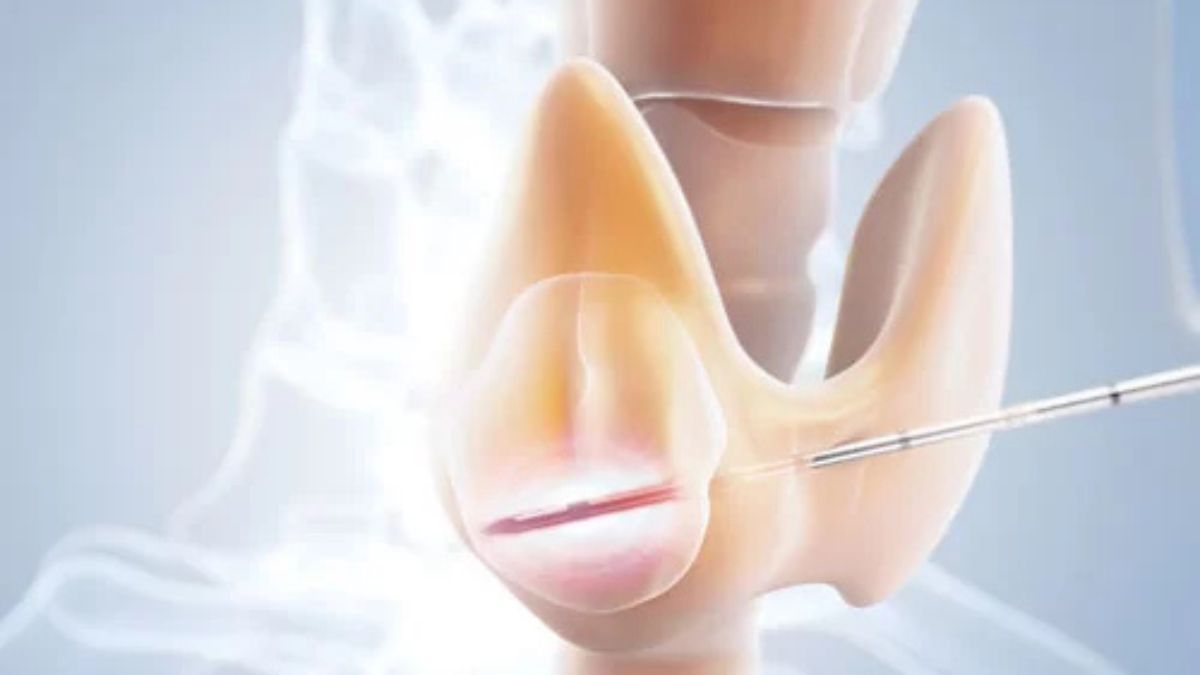HEALTH
All About Osteoporosis: Understanding Your Back Pain

Been experiencing back pain? Although you might automatically assume that it is related to a pulled muscle or injury, you may be surprised to know that osteoporosis can cause back pain. In this article we will take an in-depth dive into this condition, including how osteoporosis can impact daily life, what age groups are most at risk, common symptoms to look out for, how to get a diagnosis and treatment, and prevention advice. Let’s get started!
What Is Osteoporosis?
Osteoporosis is a condition that is characterised by a decline in bone density which weakens the bones, making them more prone to fractures. Some of the most common bones impacted by osteoporosis include the hips, wrists, ribs, and the vertebrae in the spine. The condition is more common in older individuals but can occur at any age. There are a number of risk factors that make you more susceptible to osteoporosis, which include (but are certainly not limited to):
Gender: Women are far more at risk of developing osteoporosis when compared to men. This is a result of the hormone changes that occur as part of the menopause. Oestrogen is a key hormone which plays a vital role in keeping bones strong and healthy however, one perimenopause begins, and estrogen levels begin to drop, this can have a direct negative impact on bone health. Oestrogen levels also decline in men but this is far less pronounced. Men experience a drop in testosterone as they age which can have an impact on bone density.
Family history: If you have a family history of osteoporosis, particularly on your mother’s side, the unfortunate truth of the matter is that you are at a higher risk of developing osteoporosis. This does not necessarily mean that you will get the condition, but it is recommended you should take preventative measures as early as possible.
Lifestyle: Lifestyle plays a very important role in increasing or decreasing an individual’s risk of osteoporosis. Indeed, smoking cigarettes and drinking alcohol are both known to increase the risk of osteoporosis. In addition, a lack of physical activity, not having sufficient levels of vitamin D or calcium in the diet are also risk factors.
Although not all of the above factors are in our control, how we live our life can have a significant impact on our risk. Making positive lifestyle changes early on can help keep you in good health as you age.
How Osteoporosis Causes Back Pain
So how does osteoporosis cause back pain? The back pain associated with osteoporosis is usually due to compression fractures which happen when the vertebrae in the spine collapse. The pain associated with a compression fracture of the spine can vary greatly mild to severe. Although it is often a gradual and persistent pain, it can happen more suddenly. The pain is usually exacerbated by movement but many people will find relief with rest or from lying down.
Recognising The Symptoms
Unfortunately, osteoporosis is considered to be a silent condition, meaning that the warning signs such as shrinking in height or a stooped posture, are very subtle and often not noticed before the condition is advanced. Usually the first noticeable signs are fractured bones but at this point, the condition is already in the later stages.
Back pain, of course, is not always caused by osteoporosis, however if you have back pain for more than two weeks, it impacts your daily life and ability to complete normal tasks, it is severe or continues to get worse, it is important to seek medical advice. Your rheumatologist will be best placed to help to rule out serious conditions and provide you with an accurate diagnosis.
Diagnosis
Your rheumatologist will firstly assess your general health and ask you about your back pain and any other symptoms you’ve been having. They will consider your family history and will give you an examination. They may request blood tests, X-rays, and/or bone density scans (DEXA). They will carefully assess all the information and provide an accurate diagnosis. It is important to catch osteoporosis early before permanent damage is caused as this can lead to disability. Need a rheumatologist in London? You’re well placed as the city is home to some of the very finest specialists in the country.
Treatment options for osteoporosis
Coping with chronic back pain is a challenge but your rheumatoidist will assess your individual case and create a tailored treatment plan for you. This will likely include a combination of pain management and physical therapy to help with pain, support balance and strengthen joints. Medications often prescribed include biophosphinates which are medications that slow down bone resorption. This may be combined with hormone therapy to help with low oestrogen levels in women or low testosterone levels in men. Supplementation is also very important and calcium and vitamin D supplements may be recommended by your rheumatologist.
Unfortunately in very severe cases surgery may be required, however this is usually a last resort.
Lifestyle Changes To Support Bone Health
You can make changes today to support your bone health now and into the future. This includes:
- Incorporating more calcium and vitamin D-rich foods into your diet such as dairy products, leafy green vegetables, fortified foods, and oily fish with a priority on making sure you are getting the Recommended Daily Allowance (RDA).
- Lifting heavy with regular weight-bearing exercises to help maintain strong bones.
- Cutting back on smoking and alcohol consumption as these negatively affect bone health and slow production of bone-forming cells.
Preventing Future Fractures
Preventing future fractures is incredibly important if you’ve been diagnosed with osteoporosis. You can have regular check-ups and monitoring of your calcium and vitamin D levels. In addition, you can incorporate balance-based exercises such as yoga and Pilates into your routine. These encourage good posture, better balance, and core strengthening to help reduce the risk of falls which can lead to further bone breaks.
Living Well With Osteoporosis-Related Back Pain
Coping with chronic back pain can be a real challenge but with the right guidance and support from a rheumatologist, the symptoms (whatever the cause) can be managed effectively and future issues prevented. With the help of an effective treatment plan and staying active, you can take control of your health and maintain your independence.
HEALTH
Minimally Invasive Thyroid Nodule Treatments Available in Singapore

Thyroid nodules are a common clinical finding, and while most are benign, they can cause discomfort, aesthetic concerns, or, in rare cases, indicate malignancy. In Singapore, the rise of routine health screenings has led to increased detection of thyroid nodules, and patients are often concerned about invasive surgery, scarring, and recovery time. Fortunately, minimally invasive thyroid nodule treatments offer effective alternatives that reduce downtime while delivering precise outcomes.
As an endocrinologist practicing in Singapore, I frequently see patients seeking guidance on safe and efficient nodule management. Understanding the range of treatment options, their benefits, and limitations is crucial for making informed decisions.
Understanding Thyroid Nodules
A thyroid nodule is a growth or lump in the thyroid gland, located in the neck just below the Adam’s apple. Nodules vary in size, composition, and clinical significance. They may be solid or fluid-filled (cystic) and can present as a single nodule or multiple nodules. While the majority are benign, features such as rapid growth, suspicious ultrasound characteristics, or abnormal lab results warrant further investigation.
Patients often experience anxiety upon discovery of a nodule. The first step is a thorough evaluation, including physical examination, thyroid function tests, and imaging studies such as ultrasound. This assessment guides the choice of treatment, from observation to minimally invasive interventions.
For patients seeking thyroid nodule treatment Singapore, it’s important to understand that not all nodules require surgery. Many can be managed effectively with targeted, minimally invasive procedures that preserve thyroid function and minimize complications.
When Minimally Invasive Treatments Are Appropriate
Minimally invasive interventions are typically recommended for:
- Symptomatic benign nodules causing discomfort, difficulty swallowing, or breathing issues.
- Cystic or predominantly cystic nodules that recur after aspiration.
- Nodules with cosmetic concerns, particularly when located in the visible areas of the neck.
- Patients wishing to avoid conventional surgery or those unsuitable for general anesthesia.
The decision depends on nodule size, type, symptoms, and patient preference. In Singapore, advanced imaging and procedural techniques allow endocrinologists to tailor treatment plans safely and effectively.
Common Minimally Invasive Treatments
1. Ultrasound-Guided Fine Needle Aspiration (FNA)
FNA is both a diagnostic and therapeutic tool. A thin needle is used under ultrasound guidance to extract cells from the nodule for cytological examination. While primarily diagnostic, FNA can also provide temporary relief for cystic nodules by aspirating fluid, reducing nodule size and pressure symptoms.
2. Radiofrequency Ablation (RFA)
Radiofrequency ablation is a cutting-edge technique widely used in Singapore. RFA delivers thermal energy through a thin electrode inserted into the nodule under ultrasound guidance, causing controlled tissue destruction. Over weeks to months, the treated nodule shrinks significantly, alleviating symptoms without the need for surgical removal.
RFA is particularly effective for solid and mixed nodules. Advantages include:
- Preservation of normal thyroid tissue.
- Minimal scarring, as the procedure is performed percutaneously.
- Short recovery time, often allowing patients to resume daily activities immediately.
3. Laser Ablation
Laser ablation uses focused light energy to coagulate nodule tissue. Similar to RFA, it is performed under ultrasound guidance and is suitable for nodules causing cosmetic or functional concerns. Laser ablation provides precise control over the treated area, minimizing damage to surrounding tissue.
4. Ethanol Ablation (Ethanol Injection)
Ethanol ablation involves injecting concentrated alcohol into cystic or predominantly cystic nodules, inducing fibrosis and shrinkage. This approach is highly effective for recurrent cysts and is minimally invasive, performed under local anesthesia in an outpatient setting.
5. High-Intensity Focused Ultrasound (HIFU)
HIFU is an emerging non-invasive technique that uses focused ultrasound energy to heat and destroy nodule tissue without any needle puncture. While still less common than RFA or laser ablation, HIFU is ideal for patients who prefer completely non-invasive treatment.
Advantages of Minimally Invasive Treatments
Minimally invasive interventions offer several benefits over conventional surgery:
- Reduced Recovery Time: Most patients can return to normal activities within a day or two.
- Preservation of Thyroid Function: Unlike surgery, which may require partial or total thyroid removal, these treatments preserve healthy tissue.
- Minimal Scarring: Small puncture sites or no incisions reduce visible scarring.
- Lower Risk of Complications: There is reduced risk of nerve injury, infection, and bleeding compared to open surgery.
Patient Considerations and Follow-Up
Although minimally invasive procedures are highly effective, patients should understand that results may vary depending on nodule size and type. Repeat treatments may occasionally be required, especially for larger nodules.
Regular follow-up includes ultrasound monitoring and thyroid function tests to ensure the nodule shrinks appropriately and to detect any new growth. In Singapore, clinics offering these treatments often provide comprehensive follow-up care, ensuring patient safety and long-term outcomes.
Lifestyle and Supportive Measures
While medical intervention is the cornerstone of treatment, supportive measures can enhance outcomes:
- Maintaining a balanced diet rich in iodine, vitamins, and minerals to support thyroid health.
- Avoiding excessive neck trauma or strain.
- Monitoring for symptoms such as neck swelling, voice changes, or difficulty swallowing.
Educating patients about their condition and providing reassurance are integral to successful management. Many patients experience anxiety upon nodule detection, and clear communication about treatment options, benefits, and risks can alleviate concerns.
Choosing a Specialist in Singapore
Selecting an experienced endocrinologist or thyroid specialist is critical. Clinics that specialize in thyroid care offer advanced diagnostic tools, procedural expertise, and personalized treatment plans.
For patients seeking thyroid nodule treatment in Singapore, it’s important to choose a provider who can assess whether minimally invasive techniques are appropriate and who can guide you through every step of the process.
Conclusion
Minimally invasive thyroid nodule treatments provide effective, safe, and cosmetically favorable alternatives to conventional surgery. In Singapore, advancements such as RFA, laser ablation, ethanol injection, and HIFU have revolutionized care, allowing patients to address nodules efficiently while minimizing downtime and preserving thyroid function.
Ultimately, early detection, proper evaluation, and individualized treatment planning are key to optimal outcomes. With expert guidance and minimally invasive interventions, patients can manage thyroid nodules confidently, achieving both functional and aesthetic satisfaction.
HEALTH
My Experience with Eczedone: A Personal Journey to Relief

Introduction to Eczema and its Impact on Daily Life
Eczema is more than just a skin condition; it can feel like an unwelcome companion that follows you everywhere. The relentless itch, the dry patches, and the constant need to apply creams can overshadow daily life. It’s a struggle that many people face, often leading to frustration and self-consciousness. As someone who has battled eczema for years, I know how challenging it can be to find relief.
Traditional treatments often come with their own set of challenges—side effects or limited effectiveness left me feeling disheartened. That’s when I stumbled upon something different: Eczedone. This innovative solution promised not only relief but also hope—a chance to reclaim my skin and my confidence.
Join me on this personal journey as I share my experience with Eczedone, exploring its impact on treating eczema and what it means for those seeking comfort from this persistent condition.
My Struggle with Eczema and Traditional Treatment Options
Living with eczema felt like an endless battle. My skin often itched and burned, making daily life a challenge. I tried everything from over-the-counter creams to prescription medications. Each attempt brought temporary relief but never lasting results.
Doctors recommended steroid creams, which helped at times but left me feeling uneasy about their long-term effects. The side effects were daunting; thinning skin and other complications lingered in the back of my mind.
I also explored natural remedies like coconut oil and oatmeal baths, hoping for something gentle yet effective. While soothing in the moment, these approaches didn’t address the underlying issues.
The frustration grew as flare-ups continued to disrupt my routine. It was disheartening to feel trapped in this cycle without a clear solution on the horizon.
Discovering Eczedone: What It Is and How It Works
Eczedone is a game-changer in the world of eczema treatment. Unlike traditional options that often focus on temporary relief, Eczedone targets the root causes of inflammation and irritation.
This innovative product combines natural ingredients known for their soothing properties. It works by penetrating deep into the skin to promote healing from within. Users can expect reduced redness and itching with regular application.
Many have praised its lightweight texture, making it easy to incorporate into daily skincare routines. Plus, it’s free from harsh chemicals that can aggravate sensitive skin.
Understanding how Eczedone functions gives hope to those struggling with eczema. By addressing both symptoms and triggers, it paves a new path toward healthier skin and improved quality of life.
My Personal Experience with Using Eczedone
When I first started using Eczedone, I felt a mix of hope and skepticism. My skin had been through so much. The relentless itchiness and redness were exhausting.
Applying the cream was simple. It absorbed quickly, leaving no greasy residue behind. After just a few days, I noticed my flare-ups becoming less intense.
What surprised me most was how soothing it felt on application. No burning sensation—just relief washing over my skin.
As the weeks went by, my confidence grew alongside the improvement in my condition. Wearing short sleeves didn’t feel daunting anymore; instead, it became an option again.
The transformation wasn’t just physical; emotionally, I began to reconnect with activities that eczema had previously sidelined me from enjoying fully.
The Benefits of Eczedone and its Effectiveness in Treating Eczema
Eczedone has emerged as a game-changer for many dealing with the discomfort of eczema. Its innovative formulation targets inflammation and helps restore the skin’s natural barrier.
One significant benefit is its fast-acting relief. Users often report reduced itching and redness within days, allowing them to regain comfort in their daily lives. This rapid response can be life-changing for those who struggle with flare-ups.
Additionally, Eczedone contains natural ingredients that are gentle on sensitive skin. Unlike some harsh treatments, it minimizes irritation while effectively combating symptoms.
Many have also noted an improvement in overall skin hydration after consistent use. This added moisture supports healing and reduces recurrence of dry patches common with eczema.
With regular application, Eczedone promotes resilience against triggers, helping users feel more empowered in managing their condition effortlessly.
Tips for Managing Eczema Symptoms Alongside Eczedone
Managing eczema symptoms requires a multifaceted approach, even while using Eczedone. Hydration is key. Drinking plenty of water can help keep your skin moisturized from the inside out.
Incorporate gentle skincare routines into your daily life. Opt for fragrance-free products that won’t irritate your sensitive skin. Look for emollients and ointments that provide lasting hydration.
Pay attention to your triggers. Stress, certain foods, and environmental changes can exacerbate flare-ups. Keeping a journal may help identify these patterns.
Consider incorporating anti-inflammatory foods into your diet as well. Foods rich in omega-3 fatty acids, like salmon or flaxseeds, might support overall skin health.
Don’t underestimate the power of relaxation techniques such as yoga or meditation to manage stress levels effectively; they can indirectly contribute to fewer eczema outbreaks over time.
Conclusion: Empowerment through finding
Finding relief from eczema can feel like a never-ending battle. For many, traditional treatments often leave much to be desired, leading to frustration and disappointment. However, my journey took an unexpected turn with the discovery of Eczedone.
Eczedone has not only transformed my skincare routine but also given me hope. Its effectiveness in soothing my skin made a significant difference in managing symptoms that once consumed my daily life. The natural ingredients work harmoniously to calm irritation while providing lasting hydration.
Throughout this experience, I’ve learned that empowerment comes from being proactive about our health choices. With Eczedone by my side, I’ve found renewed confidence and comfort in living with eczema. It’s essential for anyone struggling with this condition to explore options like Eczedone and discover what works best for them.
Taking charge of your skincare journey may require some trial and error, but finding solutions that resonate personally is incredibly rewarding. Remember, you are not alone on this path; support exists within communities of those who understand what you’re going through.
Embracing new possibilities can lead us toward relief we never thought possible—just as I experienced firsthand with Eczedone.
HEALTH
Smoothiepussit: Creative Combos to Satisfy Any Craving

Are you ready to elevate your smoothie game? Say hello to smoothiepussit, the delightful fusion of flavors that will have your taste buds dancing. Whether you’re craving something fruity, creamy, or a little bit daring, smoothiepussit offers creative combinations that satisfy every whim. This isn’t just about blending ingredients; it’s a journey into the world of unique tastes and textures that invigorate your palate. Let’s dive into what makes smoothiepussit a must-try in today’s health-conscious culinary landscape!
What is Smoothiepussit?
Smoothiepussit is a delightful twist on the traditional smoothie concept. It’s all about creativity and flavor exploration. Think of it as your canvas, where fruits, vegetables, grains, and even unexpected ingredients come together to create something extraordinary.
This innovative approach invites you to mix and match various components. From tropical fruits like mangoes and pineapples to leafy greens such as spinach or kale, the possibilities are endless.
The real magic happens when you get bold with pairings. Imagine adding nut butters for creaminess or spices for an extra kick. Smoothiepussit allows you to express yourself through food while satisfying cravings in unique ways.
It’s not just a drink; it’s an experience that can transform any meal into a joyful occasion. Whether you’re looking for breakfast options or a quick snack, smoothiepussit offers versatility that transcends typical smoothie boundaries.
The Benefits of Incorporating Smoothiepussit into Your Diet
Incorporating smoothiepussit into your diet can be a game-changer for health enthusiasts and casual eaters alike. This delightful blend of fruits, vegetables, and superfoods offers a quick nutrient boost that fuels your day.
Rich in vitamins and minerals, smoothiepussit helps strengthen the immune system. It’s an easy way to get essential nutrients without the fuss of meal prep.
The fiber content aids digestion while keeping you feeling full longer. That means fewer cravings between meals.
Smoothiepussit is also versatile; it accommodates various dietary needs—vegan, gluten-free, or high-protein options are just a blender away. You can experiment with flavors and textures to find what satisfies your taste buds.
Plus, whipping up a batch takes minutes! Whether as breakfast or an afternoon snack, it’s both convenient and delicious. Enjoy the benefits while treating yourself to something tasty each time you sip on this vibrant drink.
Classic Smoothiepussit Combinations
Classic smoothiepussit combinations are a delightful way to enjoy the goodness of fruits and veggies. They bring together familiar flavors that dance on your palate.
Consider the timeless banana-strawberry mix. Creamy bananas paired with sweet, juicy strawberries create a blissful blend that’s hard to resist. Toss in some spinach for an extra nutrient boost without altering the taste.
Another favorite is mango-peach fusion. The tropical sweetness of ripe mangoes complements the soft texture of peaches perfectly. Add coconut water for a refreshing twist that hydrates you beautifully.
Don’t overlook the classic blueberry-almond combination either. The rich, tart berries mixed with almond milk yield a deliciously creamy treat packed with antioxidants.
These classic pairings not only satisfy cravings but also make preparing smoothiepussits simple and enjoyable!
Unconventional Smoothiepussit Pairings to Try
Dare to step outside the box with your smoothiepussit creations. Think beyond fruits and greens.
How about adding a hint of spice? A dash of cayenne pepper can elevate your flavor profile, giving that refreshing sip a surprising kick.
For the adventurous souls, consider combining avocado with cacao powder. The creamy texture from the avocado blends beautifully while adding healthy fats, making it both indulgent and nutritious.
Ever thought about using herbs like basil or mint? They provide an aromatic twist that pairs well with sweet ingredients, brightening up any blend.
And if you’re feeling extra bold, try incorporating cooked beets. Their earthy sweetness adds depth and a vibrant color that’s hard to resist.
These unconventional pairings will not only excite your palate but also inspire creativity in every glass you pour. Who knows what delightful combinations await discovery?
Tips for Making the Perfect Smoothiepussit
To craft the perfect smoothiepussit, start with a solid base. Choose your favorite liquid—almond milk, coconut water, or even green tea can elevate your blend.
Next, add fruits and veggies that complement each other. Bananas pair well with spinach for a nutrient boost. Experiment with frozen fruits for a frosty texture.
Don’t overlook the extras! A scoop of protein powder or nut butter adds creaminess and sustenance. Superfoods like chia seeds or spirulina can amp up the nutrition factor significantly.
Blend at high speed but don’t rush it. Give everything time to merge into a silky consistency. If it seems too thick, splash in more liquid gradually until you reach that ideal smoothness.
Taste test before serving! Adjust sweetness with honey or maple syrup if needed to ensure every sip is delightful. Enjoy creating!
How to Incorporate Smoothiepussit into Your Daily Routine
Incorporating smoothiepussit into your daily routine is simpler than you might think. Start with breakfast; blend your favorite fruits and greens for a refreshing morning boost. This sets a positive tone for the day.
You can also enjoy it as an afternoon snack. A quick, nutrient-rich option that keeps cravings at bay while providing energy to tackle the rest of your tasks.
Don’t forget post-workout recovery—smoothiepussit makes an excellent protein-packed treat. Toss in some yogurt or protein powder alongside those vibrant ingredients for maximum benefits.
Experimenting during meal prep is another fun way to include this creative drink. Whip up larger batches to store in jars, making it easy to grab on busy days.
Consider hosting a smoothiepussit night! Gather friends or family and challenge each other to create unique combinations using whatever’s available at home.
Conclusion
Smoothiepussit offers a delightful way to explore flavors and boost your nutrition. Whether you’re blending classic combinations or venturing into the realm of creative pairings, there’s no limit to what you can create.
The benefits of adding smoothiepussit to your diet are clear: more vitamins, minerals, and deliciousness in every sip. With simple tips for crafting the perfect mixture, it’s easy to make this enjoyable drink part of your daily routine.
So grab that blender and get ready to satisfy any craving with smoothiepussit! Embrace creativity in the kitchen and enjoy a refreshing experience each time you blend. Your taste buds—and body—will thank you for it!
-

 TECHNOLOGY5 months ago
TECHNOLOGY5 months agoTop 10 Must-Read Stories from Kristen Archives You Can’t Miss
-

 TECHNOLOGY11 months ago
TECHNOLOGY11 months agoSky Bri Net Worth Revealed: How She Built Her Financial Empire
-

 TOPIC1 year ago
TOPIC1 year agoBasement Renovation Contractors: How They Tackle Structural Issues During Renovations
-

 TOPIC8 months ago
TOPIC8 months ago5 Reasons the //Vital-Mag.Net Blog Dominates Lifestyle
-

 TOPIC6 months ago
TOPIC6 months agoTop 10 Articles from the ://Vital-Mag.net Blog That You Can’t Miss
-

 CRYPTO9 months ago
CRYPTO9 months agoCrypto30x.com Review: Is It the Right Platform for You?
-

 BUSINESS5 months ago
BUSINESS5 months agoTraceLoans Explained What You Need to Know
-

 ENTERTAINMENT3 months ago
ENTERTAINMENT3 months agoNHentai.NEF: Navigating the Popular Hentai Archive with Ease
